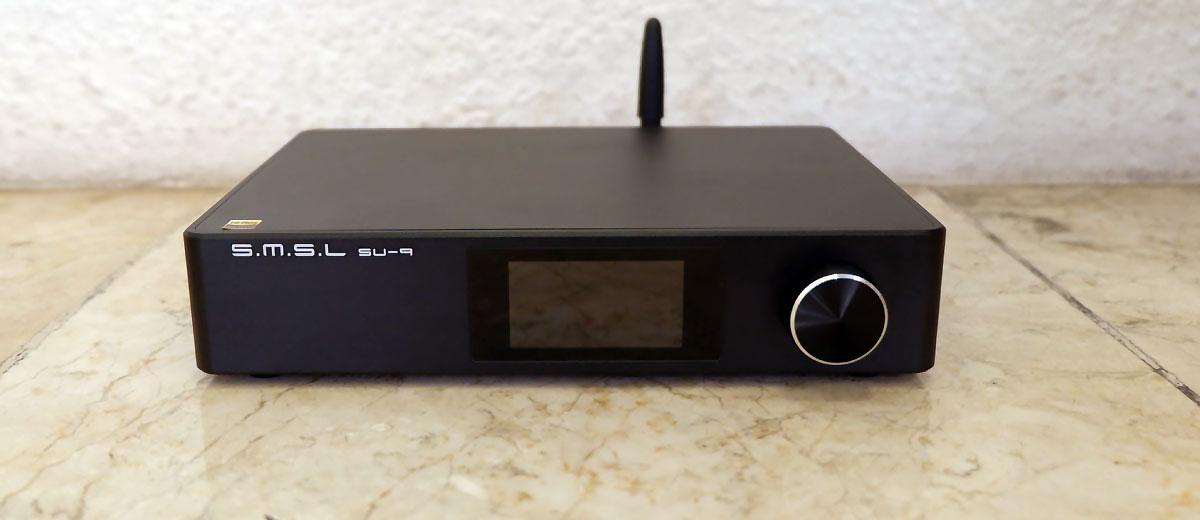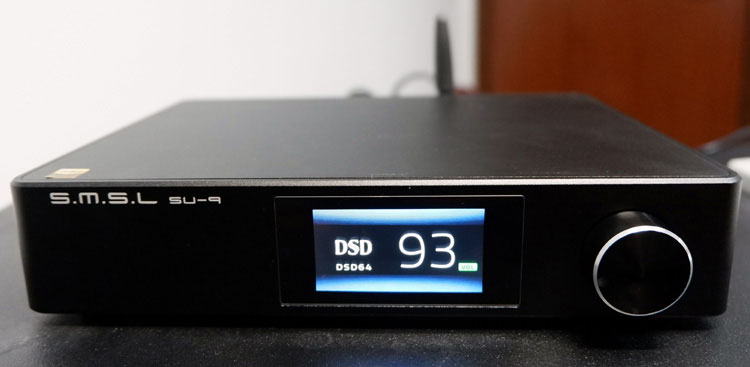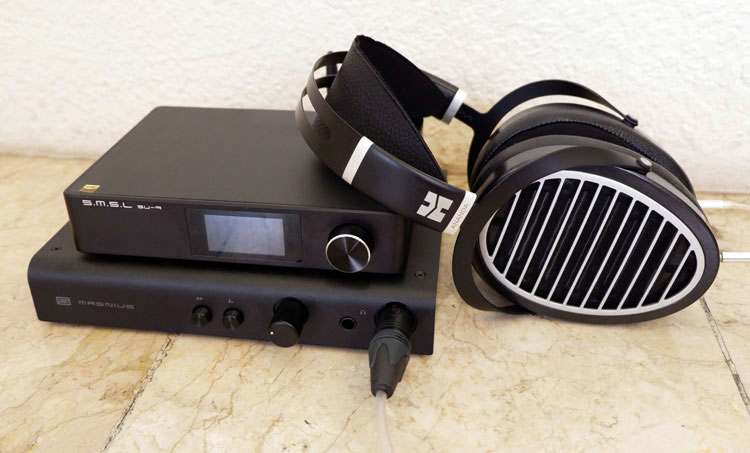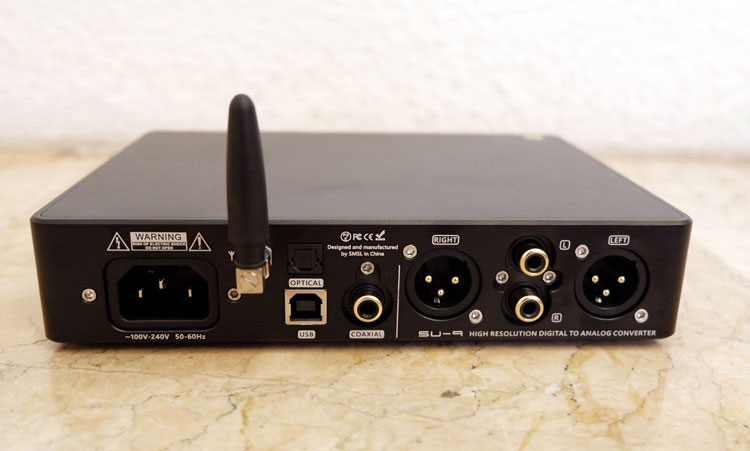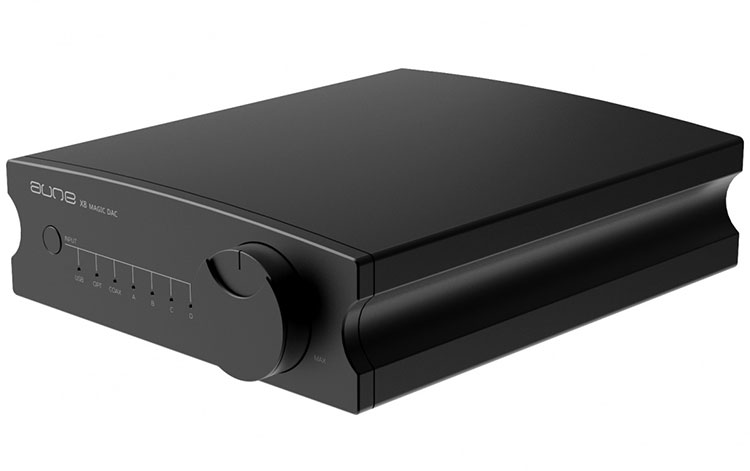The SMSL SU-9 is a new desktop pure DAC featuring an ESS SABRE9038Pro chipset, with BT5.0 UAT and MQA capability. It is priced at $439.00.
Disclaimer: The SMSL SU-9 sent to us for this review is a sample in exchange for our honest opinion. We thank Shenzhen Audio for giving us this opportunity.
To read more about SMSL products we have reviewed on Headfonics click here.
Note, this review follows our scoring guidelines for 2020 which you can read up on here.
SMSL is a company that has been producing DACs and amplifiers from Shenzhen, China since 2009. They have since produced products such as their well-received SMSL SP200 THX AAA 888 headphone amplifier, their M-series line of DACs, and their flagship V1 DAC.
Recently, I was given the privilege to review their M100 MK2 entry-level DAC, and I was quite impressed at how refined it sounded for under $100.
So when Shenzhen Audio contacted us to ask if we wanted to give the new SMSL SU-9 a review, I was interested to hear how SMSL would approach the sound signature of another sub-$500 DAC. Note, sadly I do not have the previous SU-8 here to compare with.
Technology Inside
DAC
SMSL has opted to use a single TOTL ES9038PRO DAC chipset version for the SU-9. The ES9038PRO is designed with 8 internal DAC channels compared to the 2 that are available in the Q2M mobile versions. This allows the manufacturer to design a truly balanced DAC around the ES9038PRO chipset.
Combined with a 2nd gen XMOS USB stage the SU-9 is capable of decoding numerous lossless formats that include MQA, PCM streams up to 32bit, 768Khz, and native DSD decoding up to DSD512 and supports full MQA rendering and decoding. DoP64 is supported via optical and coaxial.
Power
Of course, having a good DAC chip will not automatically translate into good performance without having great components surrounding that DAC chip.
To ensure low noise coming in from the power supply, SMSL decided to use an ES9311 regulator which is a +3.3V low-noise, low-dropout regulator, designed specifically for DACs eliminating the need for output decoupling capacitors.
The result of this should be an ability to produce very clean power, with noise levels being kept as low as 1μV.
Clocking
Aside from the power supply, the SU-9 was also designed with Ultra-low phase noise and optimized clock processing circuits to achieve ultra-low clock jitter. This will give the SU-9 the ability to recreate more evenly spaced samples, which will ultimately contribute to a more accurate recreated signal.
Bluetooth
Streaming options on DACs are starting to become the norm with Topping and Burson among the big names offering Bluetooth decoding capability.
The SU-9 is no different but apart from offering all the latest Bluetooth Codecs including LDAC, AptX, AptXHD, AAC, and SBC, it also interestingly includes an even higher codec, UAT. UAT is proprietary to HiBy previously with their W5 dongle and DAPs via their HiBy Music app so good to see it now being more widely adopted by desktop manufacturers.
This codec is capable of an excellent 24bit/192kHz lossless level but it does require the ability of the source to transmit UAT stably which might still be a little niche. DAPs such as the HiBy R6 Pro and HiBy R8 can do that.
Packaging
I like the package that the SU-9 came in, it’s clean, functional, and practical. The box itself is just plain, it has foam inserts that will protect the device inside, even if the box were to be dropped during transit as it usually is.
Other things that came with the SU-9 are the USB cable, a power cable, the Bluetooth antenna, and of course the manual. I would have wanted to see some batteries for the remote though, but it’s simple enough to resolve, so I’m not complaining about it too much.
Also missing are some interconnect cables, but I won’t expect it as much with a higher-end product. Most people buying these things would have a few lying around anyway, and a good pair of RCA interconnects or XLR cables would be a must for this kind of product.
Design
The SU-9 only comes in 1 color as of this writing, but the matte black powder paint on the full aluminum chassis is done very well. In front, there’s a rotary dial that can be pressed for menu navigation, and right in the middle of the front fascia, there’s a 1.9” colored display, something that I don’t see in DACs that often.
At the back, there’s a standard IEC 60320-1 power connector for power, a fairly common standard for power cables, which gives the user the option to upgrade or change the power cord when the need arises. Also, this would be less of a hassle to plug into the wall instead of a wall wart.
I/O
The inputs that are available on the SU-9 are quite versatile, whereas SMSL gave options to use USB, coaxial, and optical as standard wired inputs. Also visible at the back is the socket for the antenna, which gives the option to use Bluetooth as an input mode.
There are 2 available output options for the SU-9, and these are a pair of RCA single-ended outputs and a pair of XLR outputs. Both of these outputs can be set to output at line level, which means full output or can be controlled through the remote control where the SU-9 DAC can double as a pre-amp for power amplifiers for example.
The overall heft of the unit is substantial and it will sit nicely on any table. However, I would have wanted to see 4 rubber feet instead of the 3 that are on the unit, this would have made the unit less wobbly when being pressed on at the rear corners of the unit.
Aside from that though, the unit looks solid, and the finish and workmanship seem to be able to withstand a few years on any desktop environment.
Menu Options
Menu Navigation on the SU-9 is quite intuitive, as I was able to navigate through the menu options when I first turned the unit on. Clicking the rotary dial once would take you into the main menu, and rotating the dial would cycle through the menu options, clicking again would select the highlighted menu option.
The available menu options include input selection, PCM filter, DSD filter, sound color, pre-mode, DPLL brightness, reset, and version. SMSL also included options to put the SU-9 in fixed output mode, as well as the preamp mode with 99 volume level steps.
The input selection will allow you to choose among USB, coaxial, optical, and Bluetooth. Going into Bluetooth mode would automatically make the SU-9 visible to Bluetooth devices, and would allow your Bluetooth devices such as your phone or your DAP to pair with the SU-9.
PCM Filters
The options for PCM filters include your 7 standard PCM filters, which include Fast Linear, Slow Linear, Fast Minimum, Slow Minimum, Apodizing, Fast Hybrid, and Brickwall. DSD filters that are available with the SU-9 will vary the cutoff frequency of the DSD stream, and a cutoff of 47kHz, 50khz, 60Khz, and 60Khz are available.
The above filters are designed to just fine-tune the way streams are smoothed out by the DAC, but the sound color filters will allow the user to change the Timbre characteristic of the DAC.
The sound color characteristics include No filter, Rich, Tube, and Crystal. These will slightly vary the sound character of the DAC’s sound output.
DPLL
The DPLL option on the SU-9 allows the user to vary the amount of jitter filtering from the USB source. Then there’s the option for brightness control of the display, this would especially be useful for when you want the DAC to not stand out in a darker listening environment.
Then finally, there’s the option to reset and the option to view the firmware version currently being run by the SU-9.
With these options, the SU-9 is a versatile DAC and can be used in a variety of situations from a desktop environment to a stereo setup.
The filter and sound color options on the SU-9 make the SU-9 an even more versatile DAC, enabling it to suit the taste and compensate for the downstream gear of different users.
Sound Color
Sound color on the SU-9 has 3 main sound color modes, which are Rich, Tube, and Crystal, and each tone is further subdivided into 3 levels.
These timbre character modes will not be as obvious as the default EQ settings that we can find in older devices that say Pop/Rock etc, this is a lot more subtle than that kind of change in the sound character of the DAC.
This is more like passing the signal through a different pre-amp each time the sound color mode is changed.
Rich
Rich will tend to make the sound a bit thicker. When I was playing music through my Magnius, it made the Magnius a bit thicker, something closer to how my Aune X7S class-A headphone amp sounded. A bit of that thicker analog class-A sound, but of course not quite the same level of smoothness as the real thing.
Tube Mode
Tube mode adds a little bit of tube warmth to the SU-9’s sound, it’s very subtle though. It wouldn’t be a substitute for using a tube buffer in the chain, but it still adds a bit of warmth when compared to the standard.
Crystal Sound
Finally, there’s the Crystal sound color mode, which makes the sound a bit brighter. It’s not like the high frequencies were EQ’d to increase the high frequencies, but it’s like a magnifying glass was put on the highs, and they are just that much more noticeable.
Sound color of course is no substitute for actually using EQ to change the tonality, it’s just a digital form of slightly altering the timbre character of the SU-9.
It’s closer to just adding different types of pre-amps to the chain to slightly alter the timbre character of the DAC to help the SU-9 have better synergy with the downstream equipment such as the headphone amplifier and of course the headphone itself.
Sound Impressions
The first thing that I noticed on the SU-9 is the overall smoothness of the presentation of the sound in the entire frequency spectrum. It doesn’t sound glossed over, the overall sound character is smooth, without much of an edge, but remains impactful.
I would have wanted to hear a bit of an edgier character though, maybe just a bit of a stronger bite at the end of each beat.
Impact
The lower frequencies on SU-9 are well articulated, full-bodied, and smooth. Listening to drum beats from songs such as Boston by Augustana, the SU-9 makes the bass drum beats very full, but I would have wanted to hear a bit more nuance and texture with each beat.
Vocal Performances
The vocal range on the SU-9 is quite pleasant and nuanced, the vocal track of Gotta Be Patient by Michael Buble sounded very natural. Male vocals were well articulated and very textured. I like how each word is properly pronounced because of how well the vocals are rendered by the SU-9.
Headroom
With the smoother character found on the SU-9, one would tend to expect that the treble region on the SU-9 might end up being glossed over because of the smoother presentation. However, the treble presentation on the SU-9 is still presented well, there are treble details that can be heard.
Instrument separation is also rendered quite well through the SU-9, and when listening to orchestral tracks like the orchestral version of U2’s Beautiful Day played by the Royal Philharmonic.
Each of the violins is distinct from the other violins, cellos, or basses. I’m quite impressed with how well each instrument is distinctly presented on its own.
Staging
The soundstage is presented with quite a bit of width on the SU-9, the soundstage that is formed in front is also quite respectable. The width of the stage is nicely wide as well, which then creates enough space to accurately render sound images within the sound stage.
Each falling ball on the song Bubbles by Yosi Horikawa seems to fall in a distinct place around my head when being heard through the SU-9. This gives me the impression that the SU-9 can accurately place sound elements within a certain soundstage.
The overall sound of the SU-9 is quite smooth, but it doesn’t automatically equate to being glossed over. It has a dynamic bass region and a smooth but detailed top end.
Synergy
Amp Pairings
For most of my listening on the SU-9, I used 2 amplifiers, the Schiit Magnius for the balanced tests, and my Aune X7s for testing the single-ended output of the DAC. Since both of these amplifiers have balanced capabilities, I listened using the balanced outputs for both headphone amplifiers.
The pairing of the SU-9 with the Magnius tends to be a bit thinner when compared to how it sounds through the slightly warmer Aune X7s. I ended up liking how the SU-9 sounds with the Magnius though, as the SU-9 already manages to sound quite full even without the timbre coloration from the Aune x7s.
Also, the Magnius tended to be better at presenting the details that the SU-9 is capable of presenting.
Headphone Pairings
For headphones, I first listened to the SU-9 through my HD600 connected to the Magnius, and I liked how the combination worked. The HD600 tends to roll off quite a bit at the frequency extremes, and I think the SU-9 was able to help alleviate that a bit by giving the HD600 a bit more mid-bass dynamic impact.
The smooth and detailed midrange on the HD600 though was still there, so the SU-9 was able to compensate a bit for the shortcomings of the HD600 while being able to retain its more desirable attributes.
I then tried the same system with my Hifiman Ananda, and the combination was also quite good. I found that the dynamic impact is emphasized on the Ananda, and this made the Ananda sound a bit more natural in its presentation.
I love the width and transparency of the Ananda, and I think the things that I love about the Ananda’s soundstage were retained with the help of the detailed presentation of the SU-9.
MQA
I’ve had many MQA devices before, and I haven’t found much of a benefit to having the ability to decode MQA on a DAC. I’ve had it with ifi DACs and my Audioquest Dragonfly Red, but I mostly dismissed it as being something nice to have, but not a feature that would spell much of a difference to me.
With the SU-9, I tested the MQA feature that’s available on the SU-9 by playing certain tracks on Tidal that had both a CD-quality version, as well as an MQA version. I was surprised that the difference between the MQA version and the CD-quality version was apparent.
I found that the MQA had a bit more depth to it, and details became more apparent. I think the SU-9’s pre-amp and DAC stage can render details with that much more accuracy that nuances in the track quality become immediately apparent.
Wireless Performance
Bluetooth has come a long way since the days when Bluetooth was only able to stream MP3 files, but now Bluetooth can even stream lossless files through aptX HD, LDAC, AAC, and the latest codec, UAT. SMSL has built all these codecs into the SU-9, and this would give the SU-9 the ability to receive lossless files wirelessly.
With Bluetooth on the SU-9, I believe it sounds slightly different when compared to the USB-wired connection. Using the same files, at the same bitrate of 16-bit at 44.1kHz, I found the wired connection sounds a bit louder than the same song being played through the Bluetooth connection.
When I slightly increase the volume to volume-match the Bluetooth connection with the wired connection, the 2 connections seem to have the same audio quality between the 2 connections.
Select Comparisons
Cayin iDAC-6 MK1
Previously $699, now Discontinued
Technical
The iDAC-6 from Cayin was released in 2017, and DAC technology has progressed quite a bit since then.
This DAC was released at approximately $699, substantially higher than the current asking price of the SU-9, but I think the 2 are quite comparable. The iDAC has a similar set of inputs and outputs, with both single-ended and balanced XLR outputs available to both DACs.
While there are quite a few similarities between the 2 DACs, SMSL equipped the SU-9 with a Bluetooth receiver, while the Cayin iDAC-6 on the other hand has a switchable tube output stage.
The iDAC-6 uses a pair of AKM 4490 DACs, while the SU-9 uses a more updated ESS Sabre 9038 Pro DAC chip. While the DAC chip on the iDAC-6 might be about 1 generation older, the 2 DACs sound should still be comparable.
Another notable difference between the 2 DACs is also the sheer weight of the iDAC-6, I think it weighs 3.8kg, compared to the SU-9’s 0.79kg, I believe this is because the iDAC-6 might have a more substantial power supply inside the chassis.
Tuning
The most immediate difference that I hear when I switch from the iDAC-6 to the SU-9 is that there is an obvious volume difference between the 2 when they are both being run at lineout mode.
The line-out mode on the SU-9 is slightly louder, so I had to volume match the 2 DACs so that I wouldn’t be fooled into thinking that the SU-9 sounds better when it just sounds louder.
Aside from the volume difference, I also hear a slightly more textured bass region on the iDAC-6 when compared to the SU-9. When I compare drum beats coming from the 2 DACs, the drumbeat sounds thick and round coming from the SU-9.
Coming from the iDAC-6, it ends up sounding slightly thinner with the same amount of impact, only that there is a certain amount of textured hollowness to the sound.
The midrange would be about equal on both DACs, as they can present nuanced and textured vocals. The treble would end up being slightly more pronounced on the iDAC6 when compared to the SU-9, but the SU-9 being slightly smoother doesn’t make it a slouch in detail retrieval, even when compared to the iDAC6.
The tubes on the iDAC-6 give it a very smooth but dynamic quality, but in all honesty, the SU-9 is coming pretty close to it in terms of being dynamic and smooth.
I believe that the SU-9, without having to use a tube output stage, comes close to having the smooth, dynamic, and warm character that the iDAC-6 has, something I believe is hard to achieve for a purely solid-state DAC.
Aune X8 Magic DAC
$299
Technical
The Aune X8 Magic DAC is Aune’s entry-level stand-alone DAC priced at $299, which was released earlier this year. According to the Aune website, it utilizes an FPGA(field-programmable gate array) which is programmed in-house, instead of using an off-the-shelf DAC chip.
This would take considerably more engineering on the part of Aune, as compared to using an off-the-shelf DAC chip from manufacturers such as ESS or AKM.
In terms of weight and size, I think the 2 DACs are comparable. Inputs on both devices are practically the same, except that the SU-9 has Bluetooth input. For the outputs, the SU-9 has both single-ended and balanced XLR outputs, compared to just the single-ended outputs on the X8.
Physically, the most glaring difference between the 2 DACs is the presence of a full-color display on the SU-9, compared to the LED lights that indicate the input selection and PCM filters on the X8.
Tuning
Since the X8 only has single-ended outputs, I decided to just use the single-ended output on the SU-9 for the comparison.
The first difference between the 2 is that the line-level outputs of the 2 devices aren’t volume-matched again, so I had to volume-match the 2 DACs again. I know it won’t be perfect, but I tried to match the volume levels as best I could.
Once the volumes on the 2 devices are matched, I can hear that the SU-9 sounds slightly thicker when compared to the X8. Especially in the bass region, where the SU-9’s drum beats sound more substantial, compared to the X8’s slightly thinner bass region.
The vocal range details are about the same on both, as they can present clear and textured vocals. However, the treble region on the X8 seems to be just a bit sparklier and more detailed.
The soundstage might be slightly more airy on the X8 when both DACs are being run single-ended, but when the SU-9 is run in balanced mode, the SU-9 seems to be able to breathe a bit more air into the soundstage. Image placement on both DACs seems to be about the same, as they are both able to create a clear center image and place instruments in the right places.
Overall, I can say that on single-ended, both DACs are toe to toe. But with the SU-9’s balanced outputs, I think the SU-9 just edges out the X8 a bit in the soundstage department.
SMSL M100 MK2
Technical
It might be unfair to compare the SU-9 to a product that’s just ¼ the price, but since they’re coming from the same company, and the DAC chipset inside both devices are from ESS, I gave it a shot.
Of course, form-factor-wise, the SU-9 has quite a bit more heft, and the M100 MK2 is simply a more compact and lighter unit. There will be quite a few added features available on the SU-9 such as Bluetooth connectivity, a better screen, filters, and timbre control, but I’m more interested in how much their sound would differ.
Tuning
One of the first things that I loved about the M100 Mk2 is the dynamic impact that it has over most of its competition.
This is the same dynamic impact that the SU-9 can produce, albeit at a much more refined level. Where the M100 would come short in detail retrieval, especially in the treble region, the SU-9 can deliver on the shortcomings of the M100 MK2.
The soundstage is where the SU-9 is set apart from its little brother. Although the M100 MK2 has a respectable amount of soundstage and has fairly accurate imaging, the SU-9 has a much wider center image where each sound element can be placed accurately.
Overall, the SU-9 is simply a much more refined product, where each of the positive attributes of SMSL’s M100 MK2 has simply been improved upon by their SU-9.
Our Verdict
The SMSL SU-9 is a DAC with a great selection of inputs and outputs that would look great on any desktop setup. At its core, the SU-9 is a great DAC with a thick and smooth sound signature that would have at least cost double just a few years ago.
The SU-9 made me realize that now is a great time to be shopping for a DAC since one with a mature sound wouldn’t cost as much as it did a few years ago.
SMSL SU-9 Specifications
- Input: USB/Optical/Coaxial/Bluetooth
- Output: RCA/XLR
- THD+N:0.00009%(-121dB)
- Dynamic range: XLR 130dB
- RCA 123dB
- SNR:130dB
- Output impedance: XLR 207Ω
- RCA 142Ω
- USB transmission: Asynchronization
- USB compatibility:Windows 7+,Mac OSX,Linux
- Bit depth: USB 1bit,16-32bit
- Optical/Coaxial 1bit,16-24bit
- Sampling rate: USB PCM 44.1-768kHz
- DSD 2.8224-22.5792MHZ
- Optical/Coaxial PCM 44.1-192kHZ
- DSD dsd64(DoP)
Bluetooth
- UAT:24bit/192kHz (1200kbps/900kbps/600kbps)
- LDAC:24bit/96kHz (990kbps/660kbps/330kbps)
- aptX-HD:24bit/48 kHz-576kbps
- aptX:16bit/44.1 kHz-352kbps
- SBC:16bit/44.1 kHz-328kbps
- AAC:16bit/44.1 kHz-320kbps
- Power Consumption:5W
- Standby power:<0.5W
- Size:187.5X154X40mm (WxHxD)
- Weight:0.79kg




